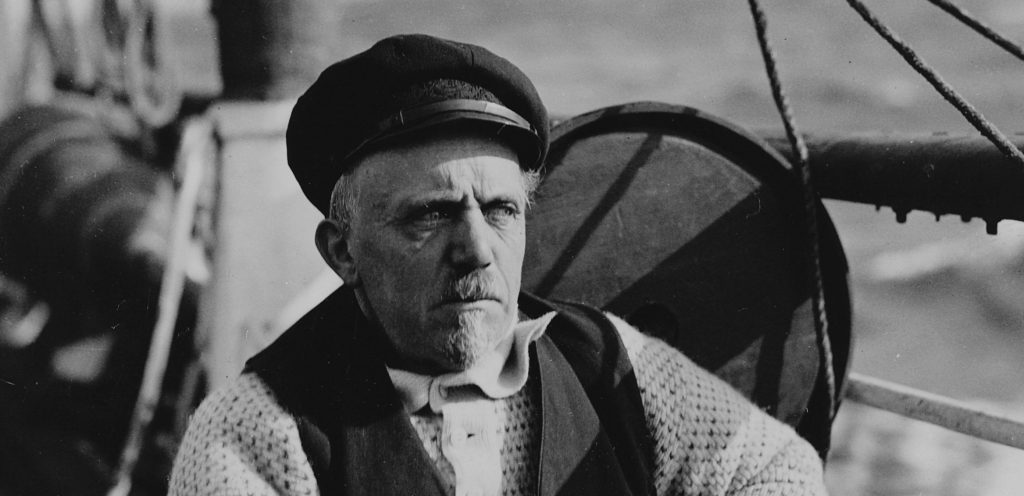
«Thor Iversen – the unknown pioneer» – Estimated running time: Approx. 50 mins. Planned documentary film about Norwegian marine researcher Thor Iversen (1873-1953). Thor Iversen’s marine research work spanned the years between 1900-1939. Aside from writing numerous scientific articles on fishery, he produced more than 7000 photographic glass plates and negatives from the Arctic region, as well as films shot on 35mm film format, taken from the fisheries along the Norwegian coast and in the Arctic waters. Iversen came to explore huge parts of the Barents Sea. He also became the first person to correctly map the correct position of the Arctic island Hopen, as well as chart and name mountains and beaches on the island.
So far, the film has received pre-project financial support from Western Norway Film Fund. In 1998 and 2001, Bergen Film Development, in conjunction with the Thor Iversen Foundation, carried out two separate expeditions to the Hopen island. These expeditions served in effect as continuations of the work Iversen laid down all those years ago. 15 hours of digital video footage, as well as a large number of stills, were recorded. In the autumn of 2024, Bergen Film Development, in cooperation with the Bergen Institute of Marine Research, will undertake a circumnavigation of the Svalbard archipelago in a traditional Norwegian wooden open 32 ft fishing vessel built in 1918. The objective of this circumnavigation is to record footage for the purpose of the film, as well as to undertake marine research in the area.
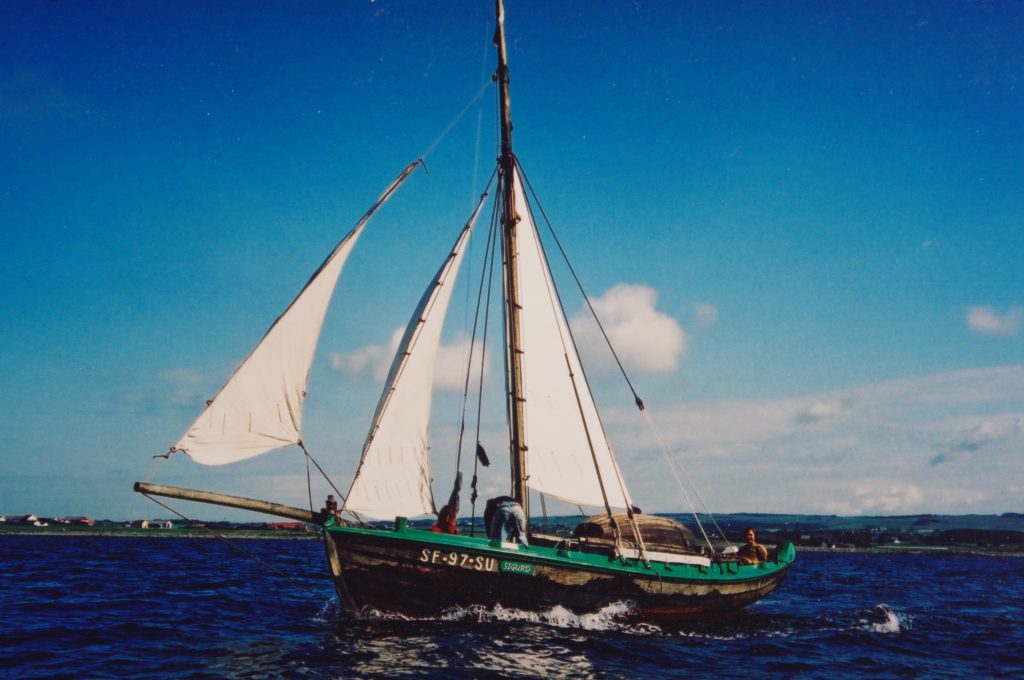
«Circumnavigation of Svalbard, Autumn 2024» As part of the Svalbard sailing (which is estimated last between 4 to 8 weeks), Bergen Film Development will also make a documentary from the circumnavigation itself. The main focus of this documentary will be research into areas pertaining to climate changes, its effects on the melting of ice, and related topics. In addition to the video footage and stills shot during the sailing, the documentary will also include stills and 35mm film footage from the 1920-30s, and thus visualize the historical development of human activity in the Svalbard archipelago. This film project has been made possible through cooperation with the Bergen Institute of Maritime Research (represented by maritime scientist Kjell Nedreaas) and the Norwegian Coast Guard.
Arctic Norway will on this sailing be experienced from that of a 105 year old traditional wooden fishing vessel, rigged in its original fashion with square and gaff rigs. Being a hitherto poorly researched field, the scientists from the Bergen Institute of Maritime Research will on this trip collect samples of biodiversity along arctic beaches in proximity to major glaciers in the region.
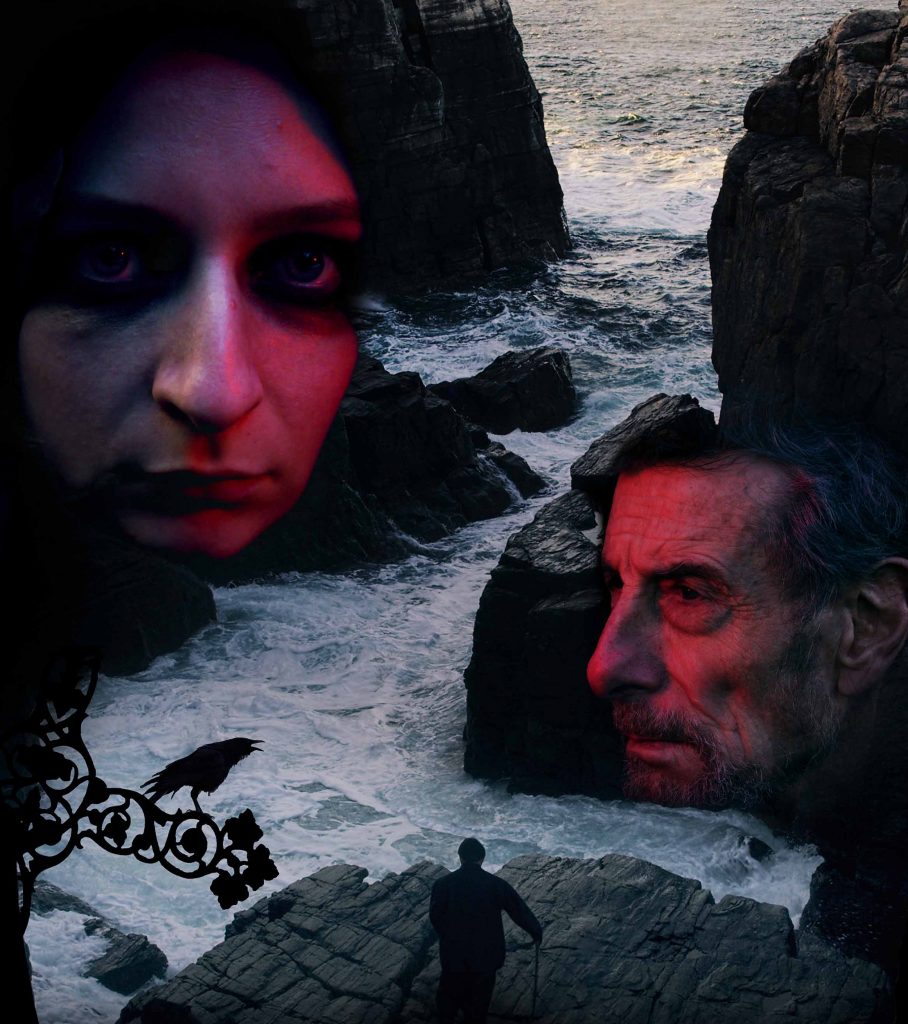
«Isle Of The Dead» – Short film. Running time: 10 mins. – Shot on 65/70mm analog film stock. Screening format: 6K Digital. Music: «Toteninsel» (Isle Of The Dead) by composer Sergei Rachmaninov. Performed by Chicago Symphony Orchestra – Conductor: Fritz Reiner.
Art short film in the form of an allegory on Man and Nature, seeking to visualize the relationship between the two through cinematic and symphonic musical means.
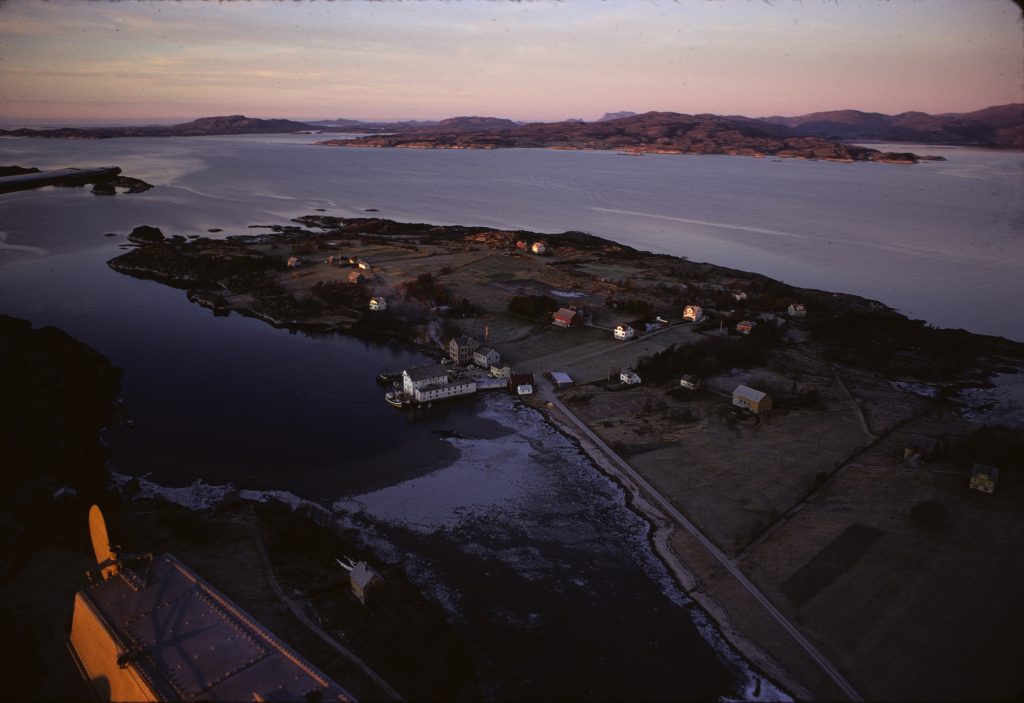
«Mongstad – the disappearance of a hamle» – Shot on 16mm Kodachrome II colour film stock in 1972. Running time: 30 mins. Cinematographer and director: Hans Kr. Bukholm. Financial backing: Hordaland County Municipality and Bergen Film Development.
Based on film footage shot in 1972 by Hans Kr. Bukholm prior to the wholesale wiping out of the local community of Mongstad in Hordaland county, Norway, for the purpose of the construction of a large scale oil refinery.
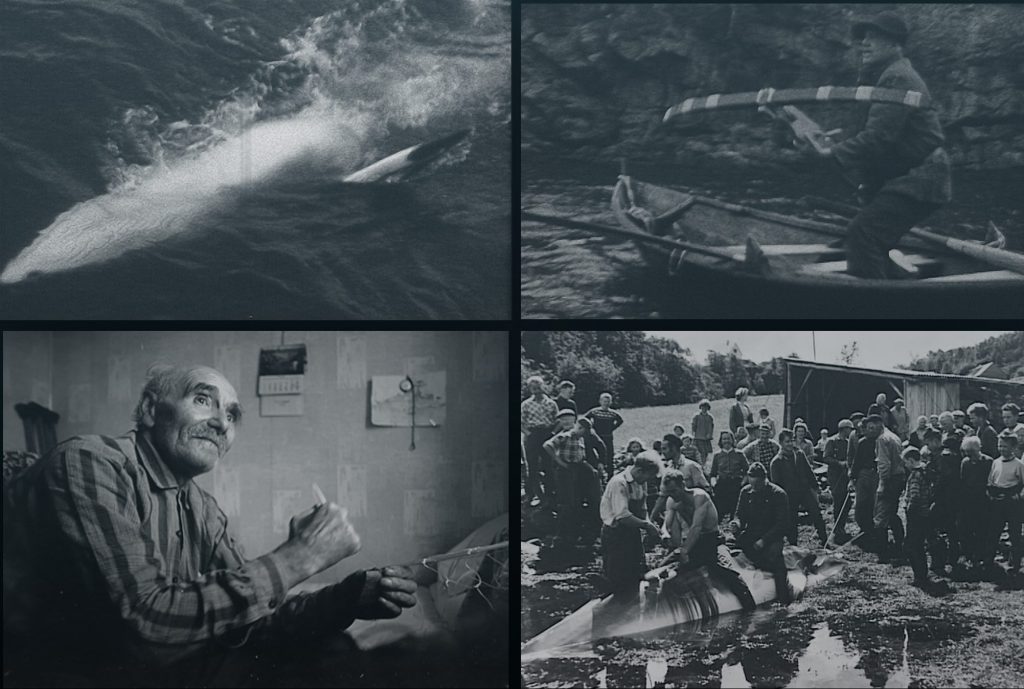
«Whale In Bay!» – Short film based on photographic and cinematic archive material from the 1930s up to the present day. Running time: ca. 15 min. In colour. Produced, directed and photographed by Hans Kristian Bukholm/Bergen Film Development. Ocean whaling is an age old activity that most people are aware of. This, however cannot be said about a local whaling tradition which has been carried out for nearly a millennium – up to our own time – by the inhabitants of the small village of Skogsvåg in the Sotra archipelago on the Western coast of Norway.
In this place, whales would routinely swim into a shallow bay, whereupon the villagers would close the bay inlet with a huge fishing net, for then to kill the whale by piercing its blubber with crossbows infected with bacterias which seriously weakened the whale. This method was unique to the villagers of Skogsvåg, and, up until our own time, the hows and whys of its unquestionable effectiveness was a mystery to scientists. Whale researcher Egil Ole Øen has grappled with said problem, and has put forth a theory which he discusses in the film. «Whale in bay!» draws upon a rich selection of photographic and cinematic source material, documenting this unique whale catching method from Skogsvåg in Western Norway.
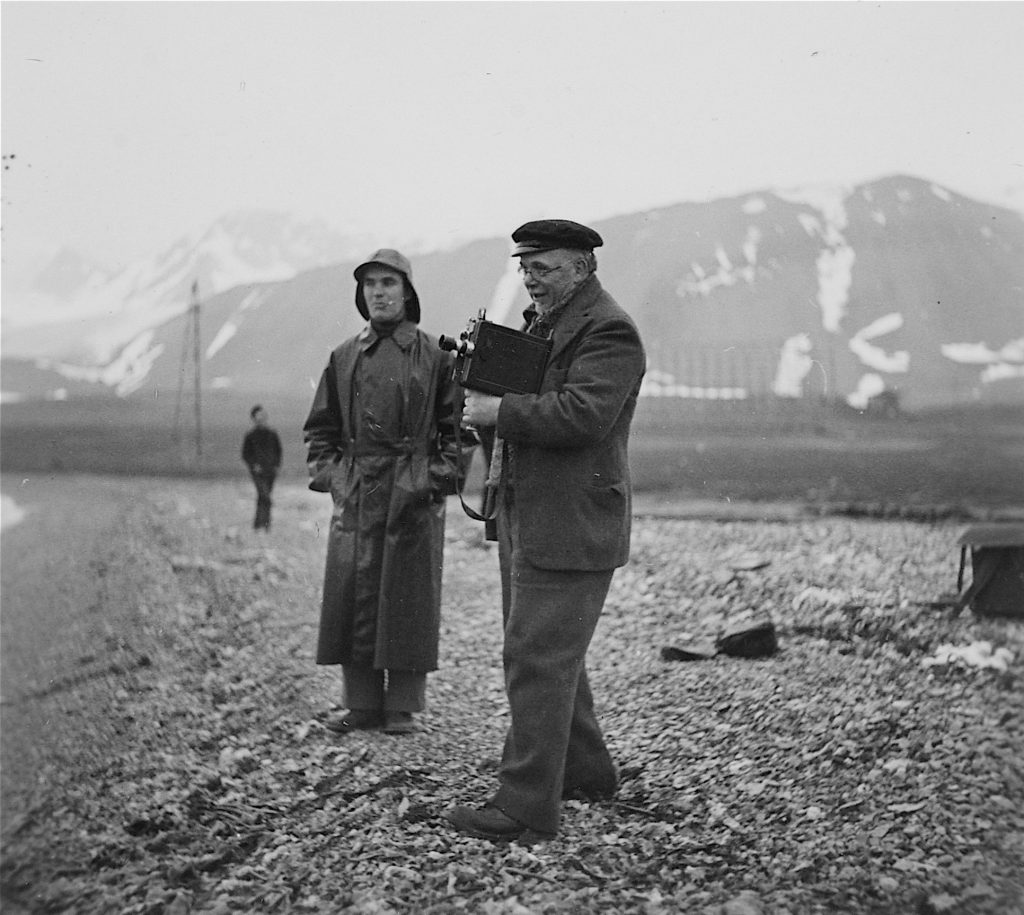
«The High North» Fishery consultant Thor Iversen (1873-1953) began with photography on glass plates already back in the 1890s. In 1923 he was tasked by the Norwegian government to research and facilitate the possibilities for commercial fishing in the hitherto largely unknown region of the waters surrounding Svalbard.
In 1924 Iversen purchased a spring wound film camera for the 35mm cinema format. With this camera, he shot and edited in the following years several short films from the region between Greenland and Novaya Zemlya. These films had running times between 10 and 20 minutes, and bore titles such as «Where The Polar Bear Roams», «A Voyage To Svalbard», et al.
All his films were financed out of his own pocket, and were screened in conjunction with deliveries of his numerous lectures. In 1939 he put together the best and most important of his short films into one feature-length cinema film, titled «The High North», which was screened in «Konsertpaleet» («The Concert Palace») in Bergen and i «Verdensteatret» («The World Theatre») in Tromsø, to high accolades from the press. A wider distribution for this film was intended, but the breakout of World War 2 in 1940 in Norway put a stop to these plans. After the war, the film was cut into pieces and forgotten. After Thor Iversen passed away, his late wife Marie Iversen preserved most of his film and photo archive. In 1977, she passed this material on to Hans Kristian Bukholm – all rights included.
When Bukholm in 2007 was awarded the Government Grant by the Parliament of Norway, an opportunity presented itself to take on a major project – to go through Thor Iversen’s films in toto, and carry out the process of putting them together as faithfully as possible in accordance with Iversen’s original notes from the 1930s. An invaluable source of contribution to this work was that of Sveinung Melkild, Thor Iversen’s last assistant. Melkild worked with Iversen from 1948 until the latter’s death 1953.
The newly restored version of «The High North» has a running time of 1 hour and 40 minutes, and premiered on February 8, 2011 in the Konsertpaleet Cinema in Bergen, Norway (the same theatre where the original film premiered in 1939!) The 2011 premiere was screened for an invited audience of 300, featuring newly composed piano music performed live by composer, Jørgen Larsson. For the purposed of adaptation to the distribution channels of today, the film will be edited down to an abridged version, containing the most important sequences only, with a running time of an hour, Hans Kr. Bukholm – Bergen Film Development – The Bukholm/Iversen Archives – February 2024
«Hitsøy»
Photography exibition portraying an island community in flux. Presented by City of Bergen Council Outdoor Recreation.
«Knut Moe»
In collaboration with university professor/local historian Vidar Lehman, BFD has undertaken the scanning and restoration of a photographic collection of hitherto unknown glass plate negatives. These images, taken by a young local photographer, name of Knut Mo around the time of 1st World War, depict rural and maritime scenes from Osterfjorden and Eksingedalen in Hordaland county, Western Norway. Being of significant cultural and historical importance, a selection of these images were enlarged and presented as a photo exhibition at Lindås, north of Bergen, Western Norway.
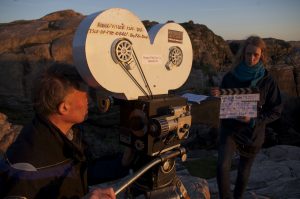
Hans Kr. Bukholm and Anette Thorsheim shooting in 65/70mm in june 2016. Photo: Roger Sangolt.